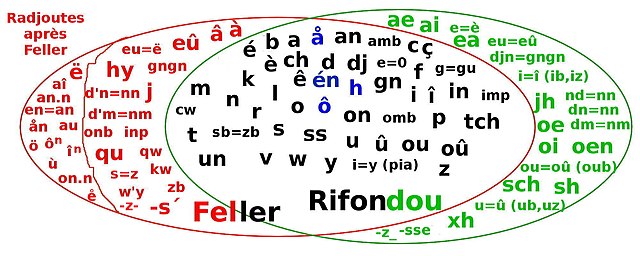Walloon_alphabet
The Walloon language has employed various alphabets over its history, most notably the Feller system (sistinme Feller) and Unified Walloon (rifondou walon or rfondou walon). The Feller system was developed to transcribe Walloon dialects by Jules Feller and was first published in 1900.[1] The same word can be spelled differently depending on dialect, so the word "fish" would be spelled <pèchon> by a speaker who pronounces the word as [pɛʃɔ̃] (with an 'sh' sound), but would be spelled <pèhon> by a speaker who pronounces the word as [pɛhɔ̃] (with an 'h' sound). In Unified Walloon, however, the same word "fish" is always spelled <pexhon>, regardless of the speakers pronunciation. The Unified Walloon alphabet, developed through the 1980s and 90s, attempts to unify spellings across dialects, and revives some older digraphs (such as <xh>) which were abandoned by Feller in favor of spellings which resembled standard French.[2][3]
